It never made sense to me why a lot of people always want to compare the 9mm vs. .45 ACP, and vice-versa. Both are great options for self defense, both are widely popular and available everywhere, and both have withstood the test of time.
These handgun calibers are two different animals — one is smaller and lighter but moves faster and penetrates deeper; while the other is larger, heavier and moves slower but creates bigger holes in soft targets.
Regardless of these differences, they’re both effective against typical two-legged threats.
This is another one of those topics I’d rather not talk about because people get all fired up when they read about two very popular handgun calibers being compared. However here we go: 9MM vs. 45 ACP
Unpack This Article's Arsenal
- Why Compare the 9MM vs 45 ACP?
- Quick History of the 45 ACP
- Terminal Ballistics of 9MM vs. 45 ACP
- 9MM vs. 45 ACP Recoil
- What about Modern Bullet Designs?
- G2 Research RIP bullets
- The High Capacity Debate
- Price of 9MM vs. 45 ACP
- 9MM vs. 45 ACP – Caliber Conversions and Versatility
- 9MM vs. 45 ACP – Key Takeaways
- 9MM vs 45 ACP – Conclusion
- The Winner Between 9MM vs 45ACP?
- Recommended Reading
Get Great Guns And Ammo Deals!
SAFEST NEWSLETTER - WE WILL NEVER SELL YOUR EMAIL
No Spam - No Selling Your Email
Why Compare the 9MM vs 45 ACP?
For some reason, I’m getting a lot of emails from our readers requesting for me to write a piece on the subject.
Those of you frequently visiting Gun News Daily and reading my articles are probably already aware about my preferences when it comes to handguns and calibers for self-defense. I’m an all-steel 1911 and magnum revolver kind of guy.
I swear by the .357 Magnum and the .45 ACP — growing up in a household where only these two handgun calibers are favored, I am biased. I’ll never take a liking to any other handgun calibers besides these, ever.
But just because I don’t like other calibers as much doesn’t mean I don’t have respect for them. One doesn’t have to like something to have some form of respect for it. A firearm and the cartridge it’s chambered for work collectively as a tool to either deter crime, incapacitate, or kill a bad guy.
Calibers that Penetrate Can Kill
It doesn’t matter what the bullet’s size and velocity is — if it’s powerful enough to penetrate several inches of human tissue, it will cause damage and potentially take someone’s life. In this regard, I have respect for all manners of firearms and all kinds of ammunition.
So despite my biases, I don’t think either of the two calibers I love is the be-all-and-end-all of handgun cartridges — even the lowly .22 LR can maim or kill anyone just fine under the right circumstances. But for the purposes of this article, I’ll stop talking about the .357 Magnum from this point onwards.
My New Purchase: a 1911 in 9mm
While it’s true that the .45 ACP is on the higher end of most ballistics charts in terms of terminal performance, I recognize that it has its downsides — areas where smaller diameter handgun calibers are better performers.
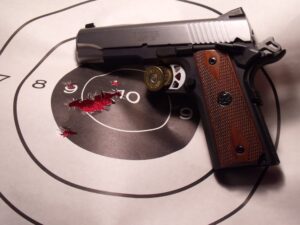
Yes, I’m fully aware that double stack compact pistols are the way to go, but this piece was offered to me by my LGS for such a tempting price ($700) that I just couldn’t find it in my heart to refuse.
I figured I’ve been avoiding this debate for too long. Now that I have two 1911s — one in 9mm and another in .45 ACP — it’s time to give my two cents on the subject.
If you’re like all the other people who emailed me wanting to know which of these two handgun calibers you’re better off with, stick around through the end of this article — maybe you’ll figure out for yourself how one is better than the other for your situation.
Quick History of the 45 ACP
In the late 1800s, the legendary John Moses Browning designed and developed the.45 ACP to aid the US military in their search for a sidearm caliber capable of stopping what was then arguably the most persistent and resilient enemy they had ever come face to face with during the Philippine-American War: the Moro Juramentados.
The US military needed a more powerful cartridge to replace their standard-issue Colt Model 1892 New Army double-action revolvers chambered for the .38 Long Colt, the parent cartridge of the .38 Special.
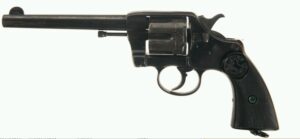
Enter the .45 ACP
The original .45 ACP design required a .451-inch diameter projectile weighing 200 grains that could be fired from an earlier semi-automatic handgun Browning also designed — the Model 1905, which was eventually replaced by the Model 1911.
The powder charge in the cartridge was enough to send the bullet out of the handgun’s barrel at speeds reaching ~900 feet per second. It was a game changer.

Rise of the 9mm
So why was the .45 ACP replaced by a smaller and weaker cartridge? Experts believe there are at least two reasons why. The first is, being a smaller cartridge with a smaller diameter, handguns chambered for the 9mm tend to have higher ammo capacity compared to those chambered for the .45 ACP.
Case in point, the Beretta M9 can hold 15 rounds in its double-stack mag. The M1911 on the other hand can only hold 7 to 8 in its typical single stack mag. Higher ammo capacity results in fewer and faster reloading times for the operator, which meant better survivability when fighting against human wave attacks like the ones employed by China in the Korean War.
Second Reason for the Rise of the 9MM
The second reason is the prevalence of the 9mm. After Austria-born gunsmith and marksman Georg Luger developed this round for use with his Luger pistol, the German Army adopted both the pistol and its cartridge as their standard issue sidearm in 1906, which made it really popular during the first and second World Wars.
During those times, 9mm pistols and ammo were manufactured by the millions in Europe. After World War II, countries involved in the previous World Wars formed an alliance following the implementation of the North Atlantic Treaty in 1949.
Standardization Agreement (STANAG) 4090 standardized a slightly more powerful 9mm load eventually called the 9mm NATO. Under STANAG 4090, all countries in the alliance adopted the 9mm as their standard military sidearm cartridge. The US, being part of this alliance, adopted the cartridge in 1979.
Adoption of the 9mm would give a strategic advantage, as US troops deployed anywhere in Europe would have an easier time finding ammo if they’re carrying a 9mm pistol. In contrast, if they run out of .45 ACP ammo for their 1911, finding ammo would be impossible.
Terminal Ballistics of 9MM vs. 45 ACP
Neither caliber is a slouch, but everyone knows that the .45 ACP is the more powerful cartridge between the two. Just how powerful though?
45 ACP Velocity
The .45 ACP can send a 230-grain bullet down the barrel at a nominal velocity of 850 feet per second, with +P loads going as high up as 1,015 feet per second. I did my own tests, shot five rounds of Armscor 230-grain FMJ from my custom Norinco NP27 1911’s 4.38-inch barrel. I got a 5-shot average of 845 feet per second — not bad for standard loads.
Granted, these velocities make the .45 ACP look really slow when compared to the blistering speeds of the 9mm. But take into account the fact that it is a much heavier bullet (it weighs twice as much as the typical 9mm 115-grain bullet) and it makes bigger holes.
You then start to see why even with its age, to this day, the .45 ACP is still a very popular option among civilians, law enforcement, and the military. It doesn’t matter whether you shoot run-of-the-mill FMJs or modern design bullets, the .45 ACP will get the job done.
9MM Velocity
On the 9mm side of the debate, speed and penetration are some of the things the little round has going for it. Typical 9mm bullets weigh 115 grains and can be pushed at a nominal velocity of 1,150 feet per second but +P loads nip at the heels of typical factory .357 Magnum loads and can go as high up as 1,350 feet per second.
Out of my newly-acquired Ruger SR1911 commander, using Armscor standard pressure 9mm 115-grain FMJ loads, I was able to get a 5-shot average of 1,220 feet per second. Again, not bad for standard loads considering the shorter 4.25-inch barrel.
The 9mm’s speed advantage results in better penetration, so much so that the 9mm is known to overpenetrate. It doesn’t create as big of a hole as the .45 ACP does, but modern bullet designs mitigate that disadvantage while also negating all possibilities of overpenetration.
Muzzle Energy of 9MM vs. 45 ACP
Comparing muzzle energies, typical .45 ACP loads have a muzzle energy of ~369 foot-pounds of force while typical 9mm loads have a muzzle energy of ~399 foot-pounds of force. This amounts to an ~8.1% difference in muzzle energy favoring the 9mm.
But if we compare overpressure ammo muzzle energies, .45 ACP+P loads can produce muzzle energies of ~526 foot-pounds of force, while 9mm +P loads can only produce ~479 foot-pounds of force, a ~9.8% difference favoring the .45 ACP.
9MM vs. 45 ACP Recoil
There is no such thing as a free lunch. The .45 ACP is a little more powerful than the 9mm, but it also has a heavier felt recoil and guns chambered for it typically exhibit a slightly higher muzzle flip when fired. That’s just Newton’s third law of motion in action, the only way around it is to keep practicing.
Here’s a quick comparison video for people who want to skip on all the math:
Now for the geeks who want to crunch some numbers.
Recoil Numbers
Fired from a Glock 30 Gen 4 that weighs 1.64 lbs, for a .45 ACP cartridge using about 8.5 grains of Power Pistol to propel a 230-grain bullet at a speed of ~850 feet per second, I get a recoil velocity of 19.99 feet per second and a recoil energy of 10.18 foot-pounds of force.
On the 9mm side of things, fired from a Glock 26 Gen 4 that weighs 1.34 lbs, a cartridge with 6.6 grains of Power Pistol that can push a 115-grain bullet at a speed of ~1,250 feet per second will result in a recoil velocity of 18.14 feet per second and a recoil energy of 6.85 foot-pounds of force.
This means assuming the same person will shoot two handguns of similar size and weight, each chambered for either of the two cartridges, the handgun in 9mm will have around ~10% less muzzle flip and around ~48% less felt recoil compared to the one chambered in .45 ACP.
Of course, let’s not forget that more recoil means less accurate and slower follow-up shots. That ~48% recoil difference means the 9mm bests the .45 ACP by a significantly wide margin when it comes to handling.
What about Modern Bullet Designs?
If you’ve been living under a rock for decades, you probably haven’t heard of modern bullet designs that push the terminal performance boundaries of typical handgun calibers. But why do we even discuss this here?
It’s because of the 9mm’s reputation for being a terrible performer in the terminal ballistics department. It’s in every gun forum online. Perhaps the single most tragic event in the history of law enforcement that led to people dismissing the 9mm’s stopping power was the FBI Miami shootout.
I’ve talked about that event in a few different articles, you can read more of it from here and here if you need more info. Long story short, despite being outnumbered 4 to 1, a civilian wearing no body armor was able to kill a few FBI agents even after being shot multiple times with .38 Special +P and 9mm rounds.
The 9mm was deemed to have insignificant stopping power, which ultimately resulted in the birth of the .40 S&W. Today though, there are a lot of different options when it comes to bullet designs.
G2 Research RIP bullets
We won’t dive too deep into this subject but if you’re so inclined, you can look at the following cartridges online:
These bullet designs work different compared to standard FMJs, JHPs and JSPs and give the 9mm the edge it needs to keep up with bigger handgun calibers in terms of stopping power and safety (i.e. so it doesn’t overpenetrate).
But just to reiterate, the .45 ACP having a bigger diameter than the 9mm means it’ll always make bigger holes, regardless of whether it’s using older or more modern design bullets.
The High Capacity Debate
Ah, another argument that just won’t die, one that has 9mm purists swearing by the little .35 caliber cartridge. Almost all handguns chambered for the 9mm boast a high round count, which shouldn’t come as a surprise.
The 9mm’s case measures 9.93mm in diameter while the .45 ACP’s measures 12.2mm in diameter. That’s a difference of 22.86% in cartridge diameter favoring the 9mm as far as ammo capacity.
For comparison, the magazine of a full-size double stack 1911 (informally referred to as a 2011) chambered for the 9mm can fit anywhere between 18 to 26 rounds.
A similar size handgun chambered for the .45 ACP can only fit a maximum of 16 in the mag. Depending on where you look, what you’re looking for and how much you’re prepared to spend, you get anywhere from 12.5% to 62.5% more ammo if you go the 9mm route.
Don’t Buy the Hype
I don’t buy into this argument — not because I’m biased toward the .45 ACP, but because I don’t think having more bullets in the mag makes me any safer. I’m a civilian, I don’t expect human wave attacks happening anywhere near me anytime.
And the average number of attackers in typical violent crime scenarios range between one to three, so really, I feel just as safe with 8 rounds of .45 ACP in my 1911 as I do with 15 rounds of 9mm in a Beretta M92FS.
Besides, guns are only just a last resort. The best defense against violent crime is awareness — criminals only like to attack people who are unaware. If you’re always watchful, they probably won’t even bother 9 times out of 10.
Of course, if you’re in the military, more is better. But you’re more likely to end fights faster using your rifle or sub-machine gun anyway, so except for situations where your standard issue long gun won’t cut it (e.g. if you run out of ammo) and you have nothing else to rely on but your sidearm, the high capacity argument favoring the 9mm is a bit of a moot point.
Price of 9MM vs. 45 ACP
This one is a biggie for most people (including yours truly). No matter how good something is, if you can’t buy it, it offers absolutely no value.
The cheapest full metal jacket 9mm ammo cost 14.4¢ per round. In comparison, the cheapest .45 ACP ammo cost 23.8¢ per round. That’s a 65.27% price difference favoring the 9mm.
If that price difference doesn’t mean anything to you, then you’re either one of the very few blessed people on the planet who don’t have to work a nine-to-five, or you’re a .45 ACP fanboy (don’t worry, I am too).
But wait, we’re not done comparing prices yet. Remember that there are two reasons why you wouldn’t want 9mm FMJs for concealed carry: one, there’s always that risk of overpenetration; and two, well, it just creates smaller holes compared to the .45 ACP.
Modern 9MM vs. 45 ACP Bullet Designs
Both of these 9mm ammo problems are mitigated somewhat by modern bullet designs. The .45 ACP doesn’t exhibit such problems, which means if you’re carrying a handgun chambered for it, you won’t need ammo using modern design bullets. So if you’re budget-conscious, the .45 ACP might actually make more sense!

But compared to the cheapest .45 ACP ammo, you pay an extra 54.2¢ per round, that’s a huge ~127.7% increase in price for an abysmal 11.10% increase in bullet diameter (i.e. the 9mm FTX bullet expands to .50 inch upon impact). It’s a negligible terminal performance gain for a significantly higher cost.
So the best way to put it is, as far as ammo prices, for self defense carry loads, the .45 ACP FMJ gives better value. For plinking and target practice loads, the 9mm is cheaper and will provide more hours of fun in the range.
Now I know some of you naysayers might be asking, why put a price on safety? I feel your sentiment, but you all have to understand that not every one of us can spend $19.50 for a box of 25 9mm rounds when there are much cheaper options out there that can do the job just fine.
9MM vs. 45 ACP – Caliber Conversions and Versatility
It has become somewhat of a customary thing when I do comparison articles that I also include caliber conversions. I know conversions should always be on the side of the launching platform, not on the side of the cartridge itself, but this isn’t something lot of people talk about when comparing cartridges of different calibers.
The .45 ACP is commonly associated with 1911s, though there are a ton of other modern semi-auto handgun designs out there such as Glocks, SIGs, Springfield XDs, etc.
If you haven’t purchased a handgun yet and you decide to go for a 1911 in .45 ACP as your shooting platform, you might be interested in three of its more powerful brethren, the .45 Super, the .450 SMC, and the 460 Rowland.
It has been widely known among enthusiasts that the 1911, despite its age, is still one of the more versatile sidearm shooting platforms on the market. We won’t get into too much detail but if you want to know more, you can reference this article from another firearms website.
The folks on these forums also talk about how, with a simple mainspring, recoil spring and firing pin stop, any 1911 chambered in .45 ACP can be converted to shoot the .45 Super.
460 Rowland
But the most powerful .45 ACP-based semi-auto shooting platform (i.e. not limited to just the 1911) is one converted to shoot the mighty 460 Rowland, a beast of a cartridge designed to mimic entry-level .44 Magnum performance in semi-autos.
There are similar options for some 9mm shooting platforms though. Some 9mm enthusiasts are known to have successfully converted their 1911s in 9mm to fire more potent .35-caliber cartridges like the 9×23 Winchester and the .38 Super.
And as with its contender, a huge lot of 9mm handguns can be converted to shoot an even more potent round — one that’s relatively new but gives the 460 Rowland a run for its money. How is that possible?
Because this new 9mm-based cartridge was also developed by the same guy responsible for the monster .44-Magnum-class .45-caliber conversion — Johnny Rowland.
If you’d like to know more, head on over to Johnny’s website. There are photos of various types of Glocks, 1911s and SIGs chambered for the 9mm that they’ve converted to shoot their new 960 Rowland, a slightly longer 9mm cartridge Johnny developed to mimic true .357-Magnum ballistics out of a semi-auto.
Conversion Options Muzzle Energy
If we’re talking muzzle energy levels, comparing all caliber conversion options for either cartridge’s handgun shooting platforms, the .45 ACP slightly wins over the 9mm in the conversion department.
And because the two are both rimless semi-auto handgun cartridges, both feed well in any box-type magazine, which is also why both work well in pistol-caliber carbines and submachine guns.
So unlike in the previous round of our series of Handgun Caliber Showdowns where the 9mm trashed the .38 Special in overall versatility, it offers no such advantage when compared to the .45 ACP.
As far as versatility, it’s pretty much a draw when it comes to non-handgun shooting platform options available to both cartridges, but the .45 ACP wins when it comes to caliber conversion options.
9MM vs. 45 ACP – Key Takeaways
If you were a little too lazy to read through the entirety of this article, here are the important takeaways in bullet points to get you up to speed:
The .45 ACP:
- Is a bit more powerful but a tad more difficult to handle as it has more recoil
- Doesn’t penetrate solid barriers as reliably as the 9mm because of its slower velocity and bigger diameter
- Makes bigger holes regardless of the type of bullet it uses
- Suffers a little in the ammo capacity department
- FMJ works well so there’s no need to spend extra on ammo that use modern bullet designs
- Is the cheaper option for civilians, but not too practical for the military
- Is as versatile as the 9mm when it comes to available shooting platforms, e.g. pistol-caliber carbines and sub-machine guns
- Has more powerful caliber conversion options but again, will be more difficult to handle
The 9mm:
- Is a little weaker but is easier to handle as it has less recoil
- Makes smaller holes compared to the .45 ACP
- Penetrates solid barriers better but tends to overpenetrate, potentially causing undue harm
- Modern bullet designs mitigate the two previous downsides
- Beats the .45 ACP when it comes to ammo capacity
- Is the more practical option for the military, but more expensive for civilians
- Is as versatile as the .45 ACP when it comes to available shooting platforms
- Has weaker caliber conversion options but again, will be easier to handle
9MM vs 45 ACP – Conclusion
It has been said everywhere online many, many times before that both the 9mm and the .45 ACP are great options for self defense. While both have their own sets of pros and cons, both are equally versatile. Both are reliable and will get the job done. Both are also very popular so there will never be an issue in terms of guns and ammo availability.
Trouble Deciding Between 9MM vs 45 ACP?
If you’re having trouble deciding which of the two is better for your situation, then chances are you’re better off getting two handguns, one in .45 ACP and another in 9mm. It’s only a matter of whether you have money to buy both at the same time, or if you only have enough to purchase one or the other for the time being.
As with all things in life, when you’re in a situation where you have to make tough choices, it never gets easy. But look on the bright side — you have choices, and remember that where there is choice, there is power.
Long and Short of It
To me, the long and short of it is, if you’re a on a real tight budget and you’re in a situation where you can only choose between these two handgun calibers’ shooting platforms, go with the cheapest handgun you can find chambered in .45 ACP and load it with the cheapest FMJ ammo you can find.
If you have a lot of money and you can buy thousands of boxes of ammo and shoot them all without worrying that they’ll eventually run out, get the most expensive handgun you can find chambered in .45 ACP and load it with the most expensive ammo you can buy. And while you’re it, consider upgrading it to shoot .460 Rowland.
If you’re somewhere in the middle (where I think most people are) and you don’t mind being just one among many, or if you just have problems with your hands or wrists (i.e. you have Carpal Tunnel Syndrome), then get a decent compact high-capacity 9mm handgun and load it with 115-grain Hornady Critical Defense FTX rounds.
The Winner Between 9MM vs 45ACP?
As for which of these two fine cartridges wins this Round 4 of our series of Handgun Caliber Showdowns — after much consideration and weighing all the pros and cons of each cartridge, as much as I don’t want to, I’m compelled to declare this round… a draw. Sorry, don’t shoot the messenger.
Recommended Reading
Definitive 9mm Full-size Handgun


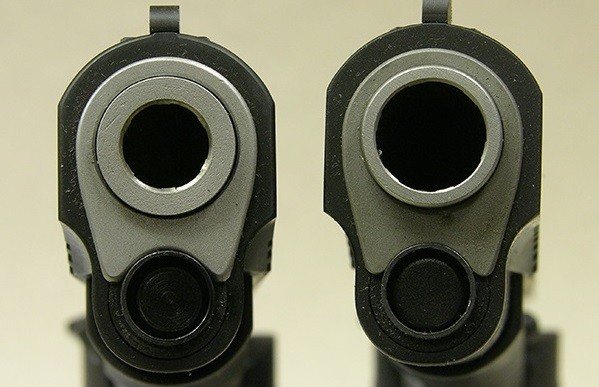


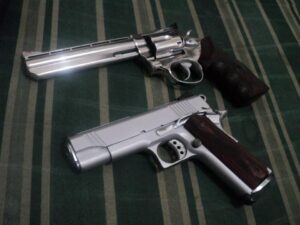

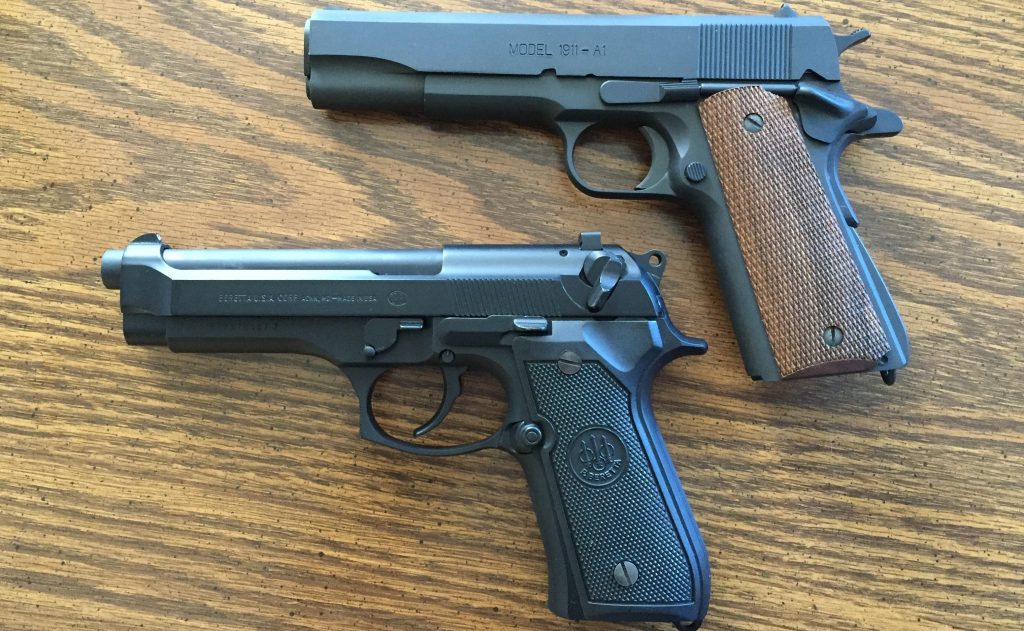
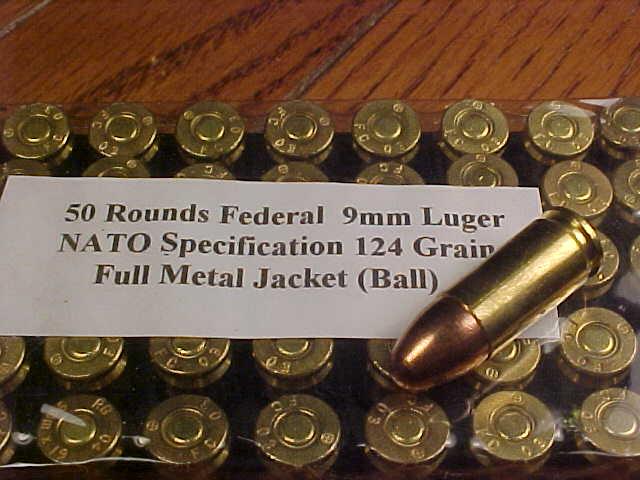


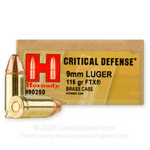
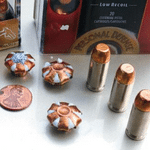
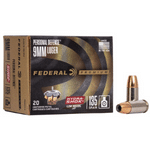

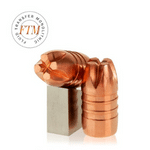

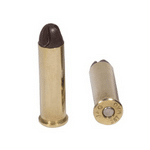

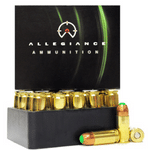
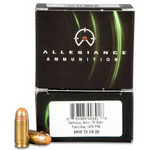
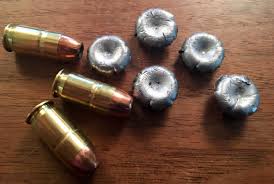
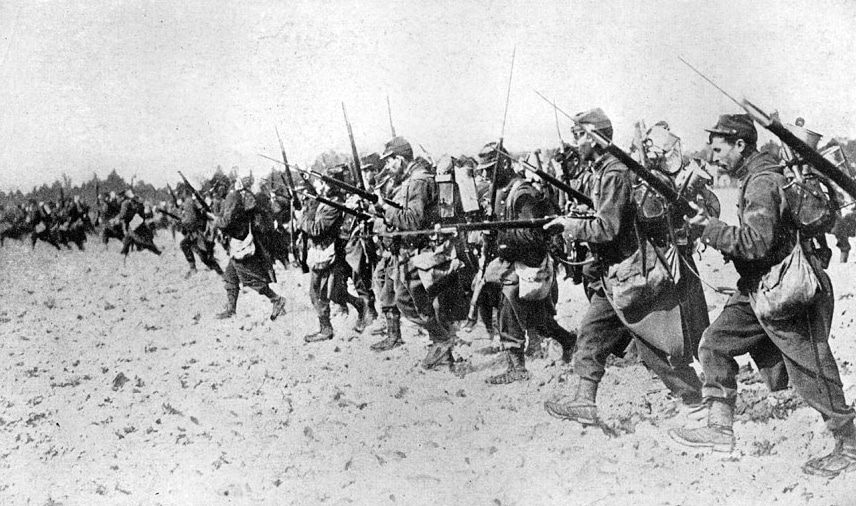
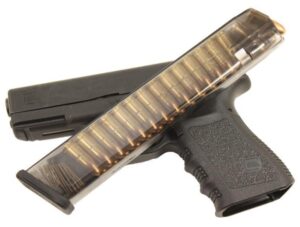
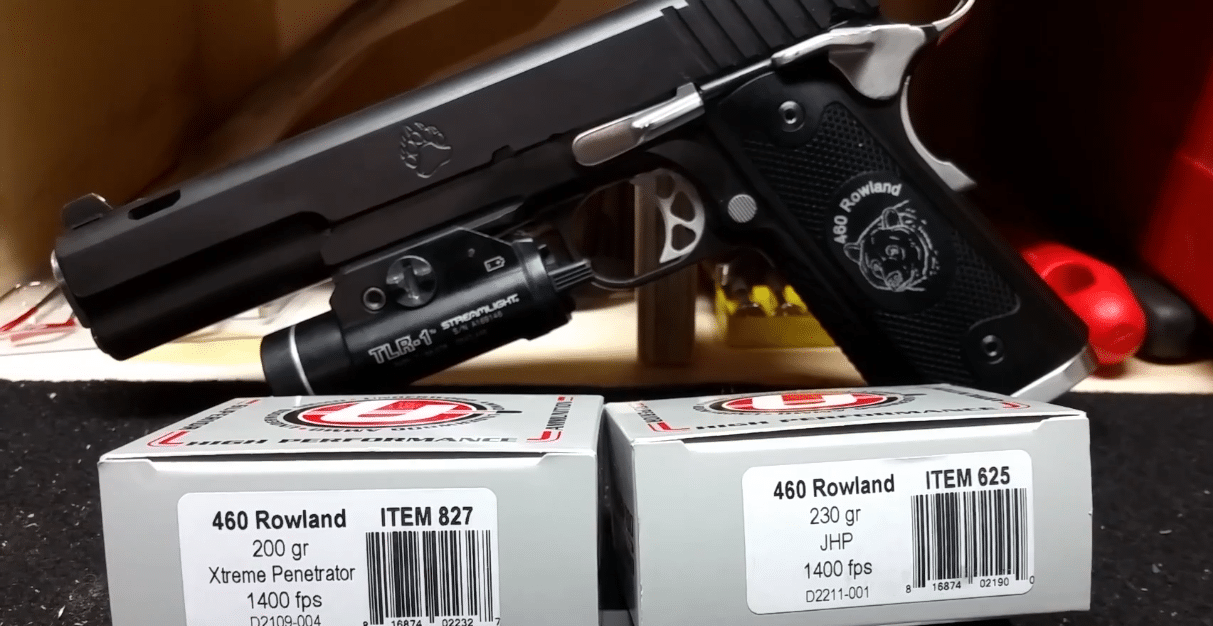
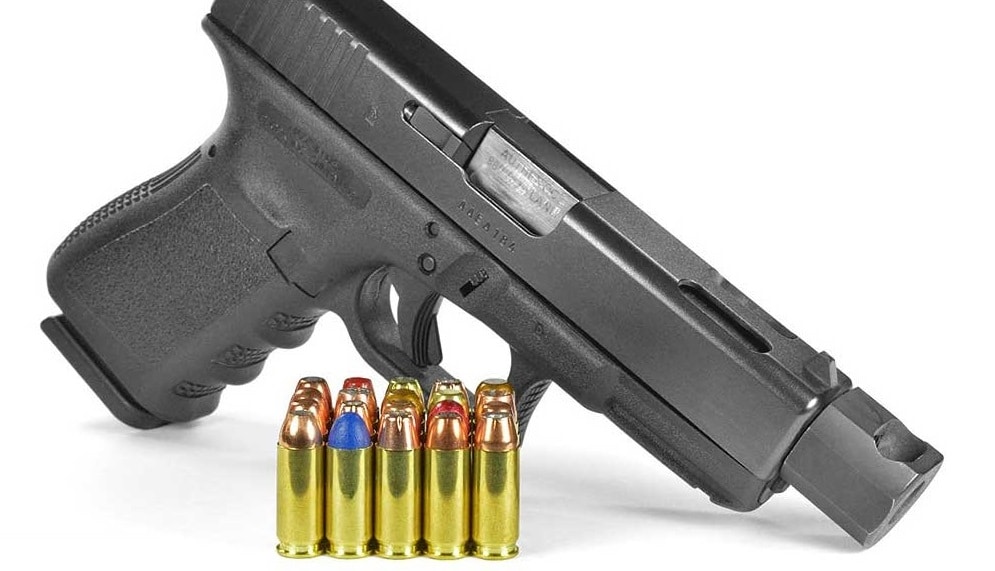
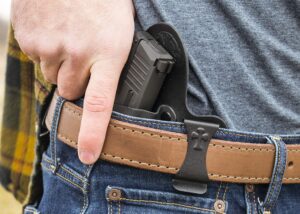
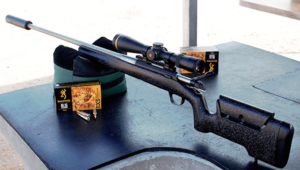
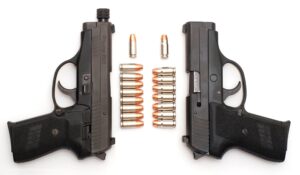
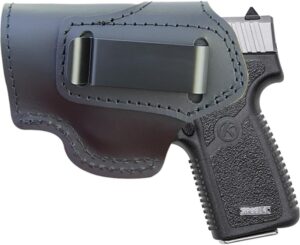



4 Responses
You gotta shoot twice as many 9mm at 115 gr as a 230 gr 45 to get the same amount of lead into the target. So 15 in the stack vs 8 is equal.
@William
Can’t disagree.
45 is too fat n slow, 9mm or 40 only way to go, even tho the 40 is dyin too.
The .45 would be more useful, like for hunting or bear encounters than the 9mm.